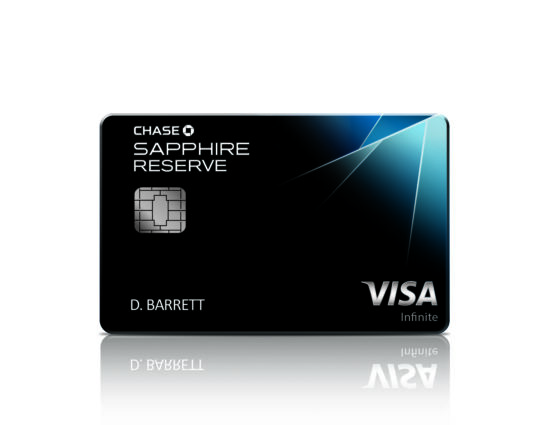Disclosure: I receive NO compensation from credit card affiliate partnerships. Support the blog by applying for a card through my personal referral links
When Chase recently made changes to the Sapphire Reserve, I outlined reasons as to why I didn’t find it worth keeping in my wallet any more. However, this recent post by Miles to Memories got me thinking about the premium credit card landscape in general. As Amex is going back in time to account for every dime, they’re only making the benefit less useful and tougher to use. For my travel patterns, I tend to find the Platinum card to be a better fit. For example, I love the Business Platinum Card for their WeWork benefit. As someone who travels the world extensively, I’m glad that this benefit gives me an ‘office’ in most major cities around the world.
Sapphire Reserve: Beyond the Welcome Bonus
While comparing credit cards, we need to focus beyond the welcome bonus. While the bonus is what attracts you to apply for the card, recurring benefits and good customer service is what keeps you as a long term customer.
Sapphire Reserve v/s Amex Platinum Card
Here’s the crux of my argument. I strongly feel that Chase Sapphire Reserve’s continuing popularity isn’t much because of how awesome it is, but because its competitors aren’t doing enough. Make no mistake, the Sapphire Reserve has amazing benefits. However, the way Amex is approaching its airline fee credit benefit and other benefits may make customers gravitate back to the Sapphire Reserve.
Sapphire Reserve v/s Citi Prestige
If you compare the big three, then Citi showed the white flag pretty early. They delivered a card which was packed with benefits too good to be true. After they acquired customers, they realized that it wasn’t financially sustainable. They increased fees, cut benefits and a lot of customers fled. Worst of all, they also cut travel protections. In response, Chase kept theirs and Amex added their own.
Airline Fee Credit
The airline fee credit benefit still continues to be a pain point for many customers. While one can understand that Amex has contractual obligations, the way Amex is going about their breakage strategy doesn’t augur well for the viability of the benefit.
Firstly, if you are like me who primarily does more international trips than domestic trips, you’ll have a tough time using the airline fee credit benefit. If you have elite status, then a lot of the incidental credits aren’t of much use to you anyway.
Simplicity Wins
Here’s where the Sapphire Reserve still wins. Visa is still a lot more widely accepted around the world as a payment network. Secondly, there is a simple travel credit which is automatic and you don’t have to jump through any hoops. Thirdly, transfer ratios are at a simple 1:1 ratio, period.
Finally, the earning structure is simpler, 3x on travel and dining. Most importantly, it still offers travel protections, a benefit which Citi dropped while Amex still only offers it on round-trip tickets. You can also use your points to book travel at a value of 1.5 cents per point, which is way ahead of their competitors’ valuations.
The Pundit’s Mantra
The Chase Sapphire Reserve is not perfect, but it still wins overall if you compare them to other cards in the same category. The key to the viability of the product is simplicity. As their competitors cut benefits or make them tougher to use, Chase keeps winning by offering a simple value proposition.
Most people carry only one premium credit card, given how steep the annual fees currently are. In such a case, the Chase Sapphire Reserve still offers great value for the frequent traveler in comparison to its competitors.
Which premium card do you carry in your wallet? Do you still think that the Chase Sapphire Reserve is the best premium card out there? Let us know in the comments section.
___________________________________________________________________________________________________________________
Are you looking to earn a great deal of Ultimate Rewards points? Then you can apply for the Chase Ink Business Preferred Card. You’ll get a welcome bonus of 80,000 Ultimate Rewards points! (Chase’s 5/24 rule applies to this card)
Never miss out on the best miles/points deals. Like us on Facebook, follow us on Instagram and Twitter to keep getting the latest content!













I’m rethinking the value of that travel credit. It’s giving away points. It’s throwing away 900 points. At first I thought it pays for itself, but now that they do not allow points to accumulate on that, it’s spending $300 and getting absolutely nothing for it. It would be the equivalent of using a (gulp) ‘debit’ card. That is a major no-no to all of us points lovers.
So keep in mind that $300 of your annual spend on this card forfeits points and it’s travel charges which would normally be bonus on top of that. Of course money is money! But using cash for $300 and getting positively zero for it really stings.
Hi ChadMC,
I’m not too fussed about getting 900 fewer points annually if the $300 travel credit stays as it is. What’s the alternative, a really badly structured airline fee credit with Amex or a credit with Citi, but without travel protections? That’s really the reason why I wrote this post – CSR has drawbacks, but it still leads overall when you compare it to cards in the same category.
I am very happy with my sapphire reserve and as of now do not plan to get rid of it.May I ask since I havn’t had to use travel insurance benifits would you suggest relying only on the card for trip insurance on booking hotel and flights ‘
Hi Siobhan, you’ll find a lot of reports with data points about having a positive experience while using the Chase trip insurance benefits. Just like you, when I’ve had issues during a trip, the airline or the hotel has taken care of it for me, so I haven’t had to reach out to my card issuer.
Chase is dead to me. 5/24
Hi Glen, Chase intentionally put 5/24 in place to make customers choose Chase over their competitors. Is there a Chase card that you’re really looking to get?